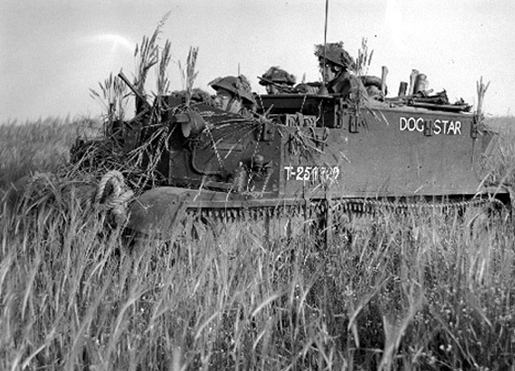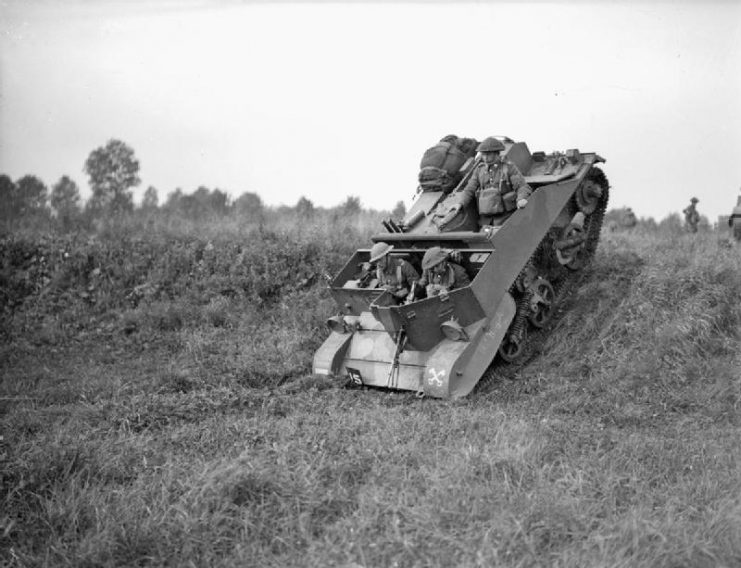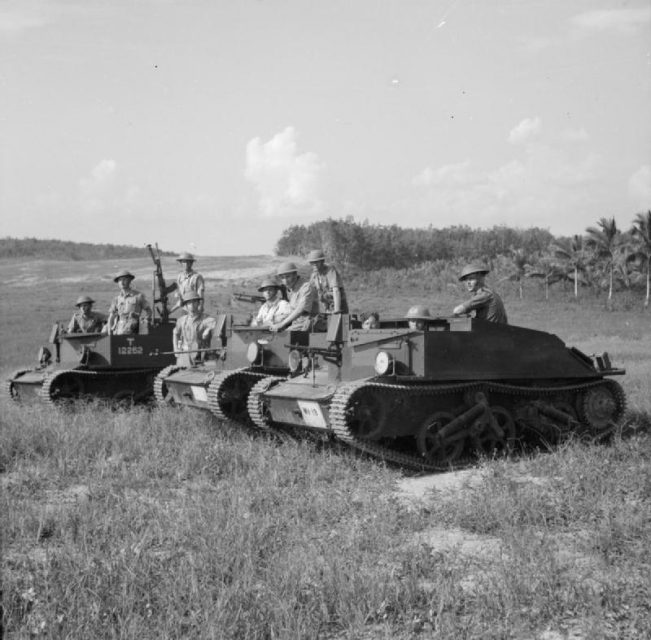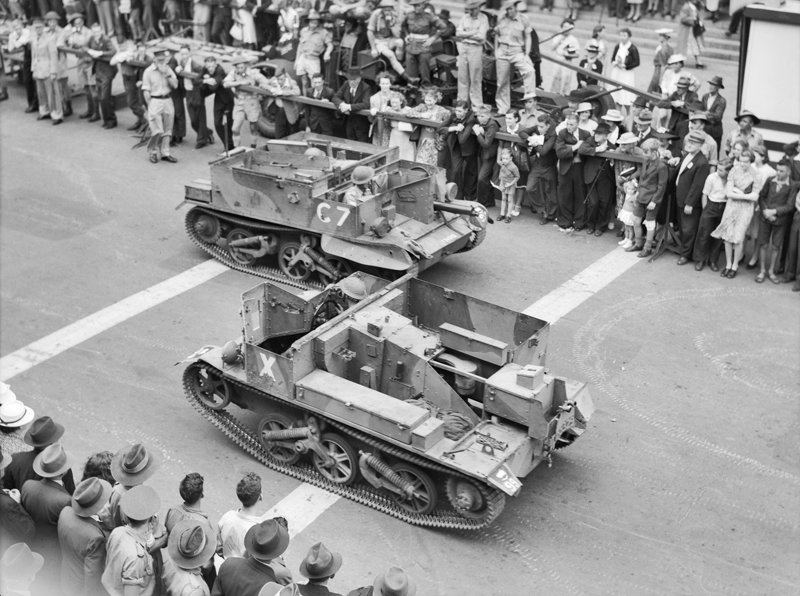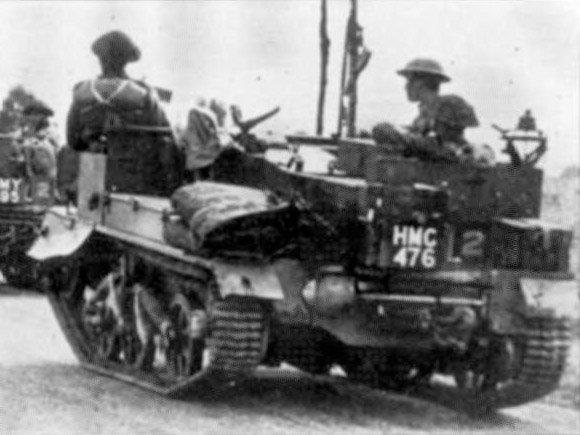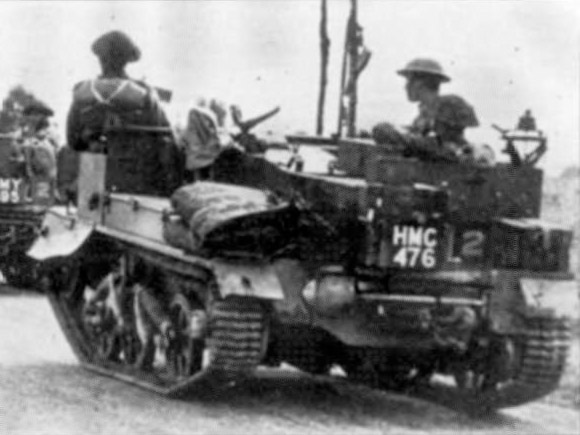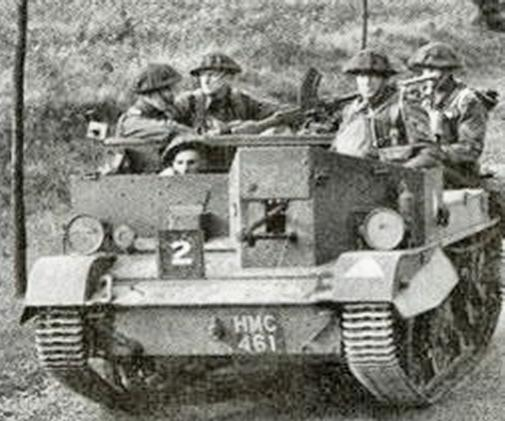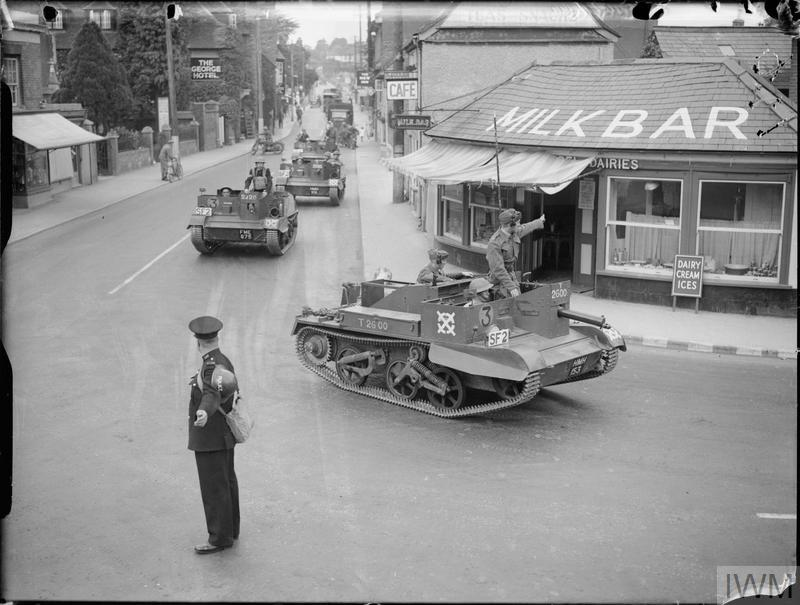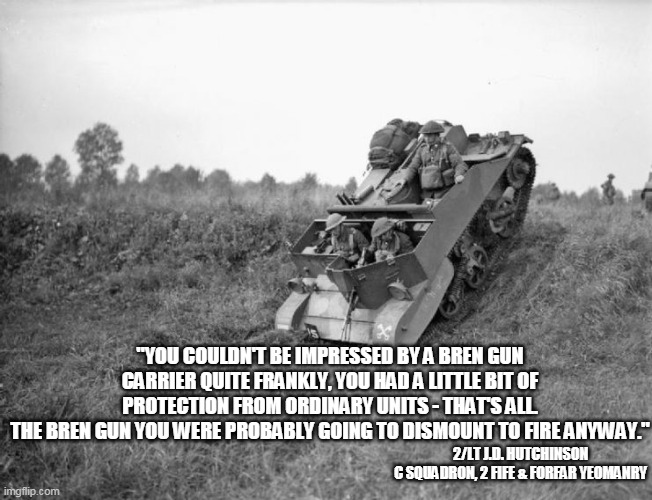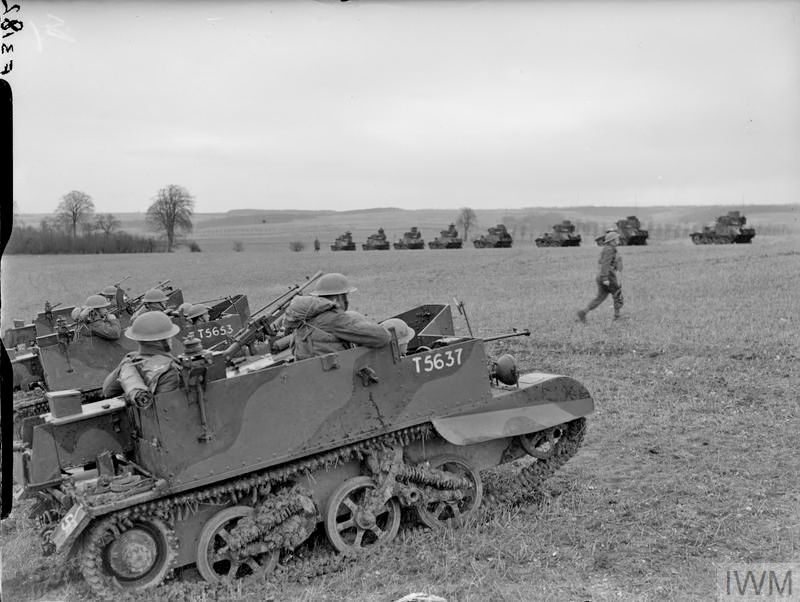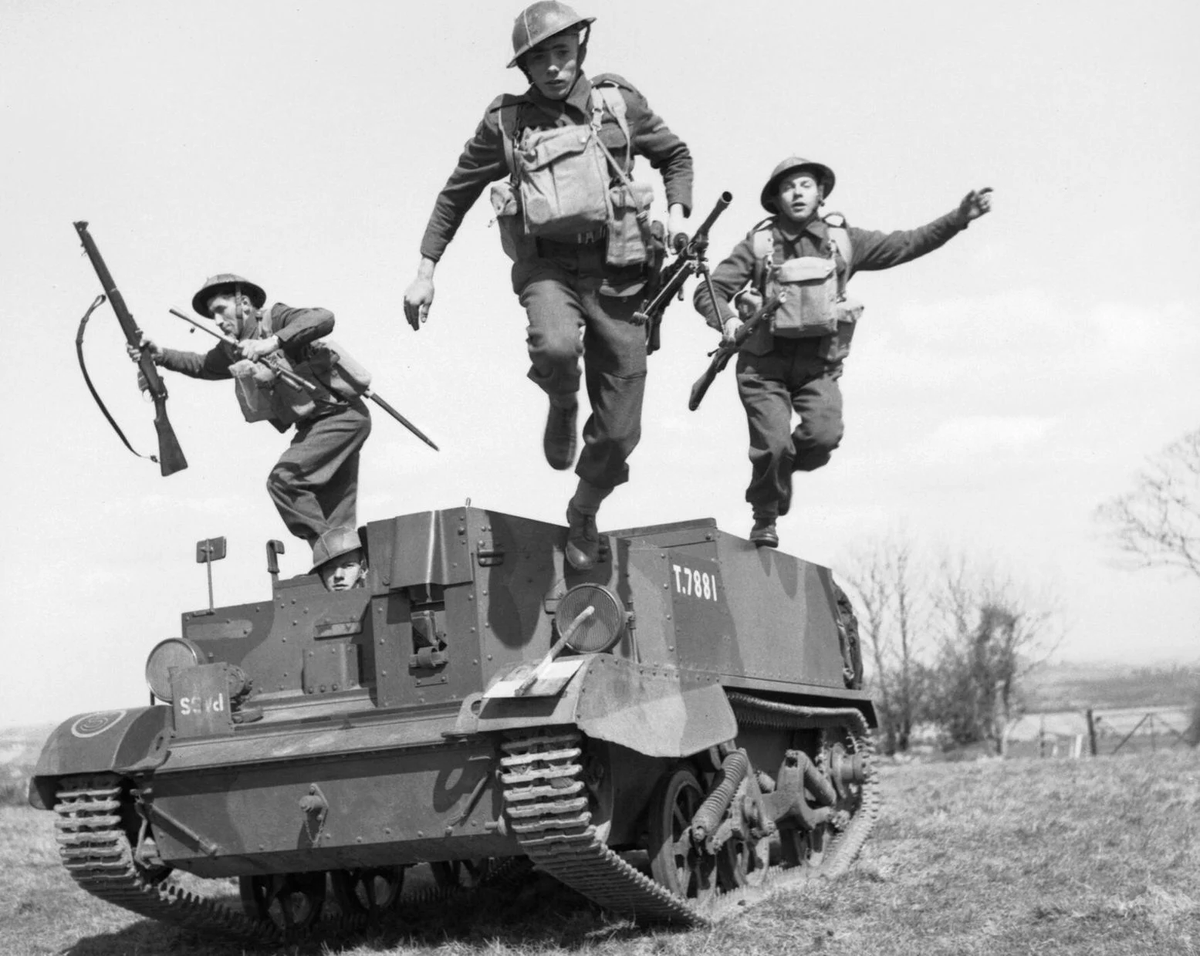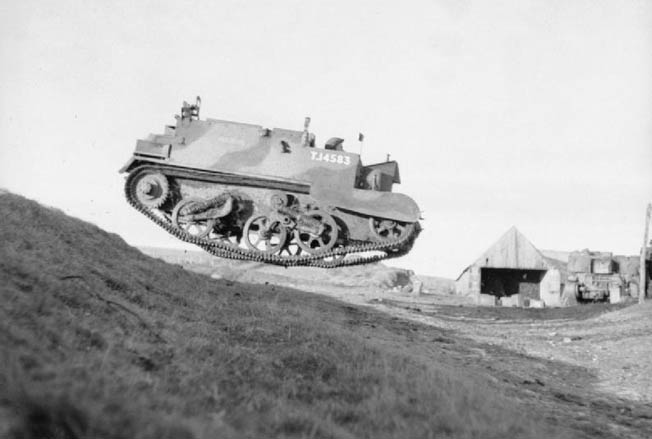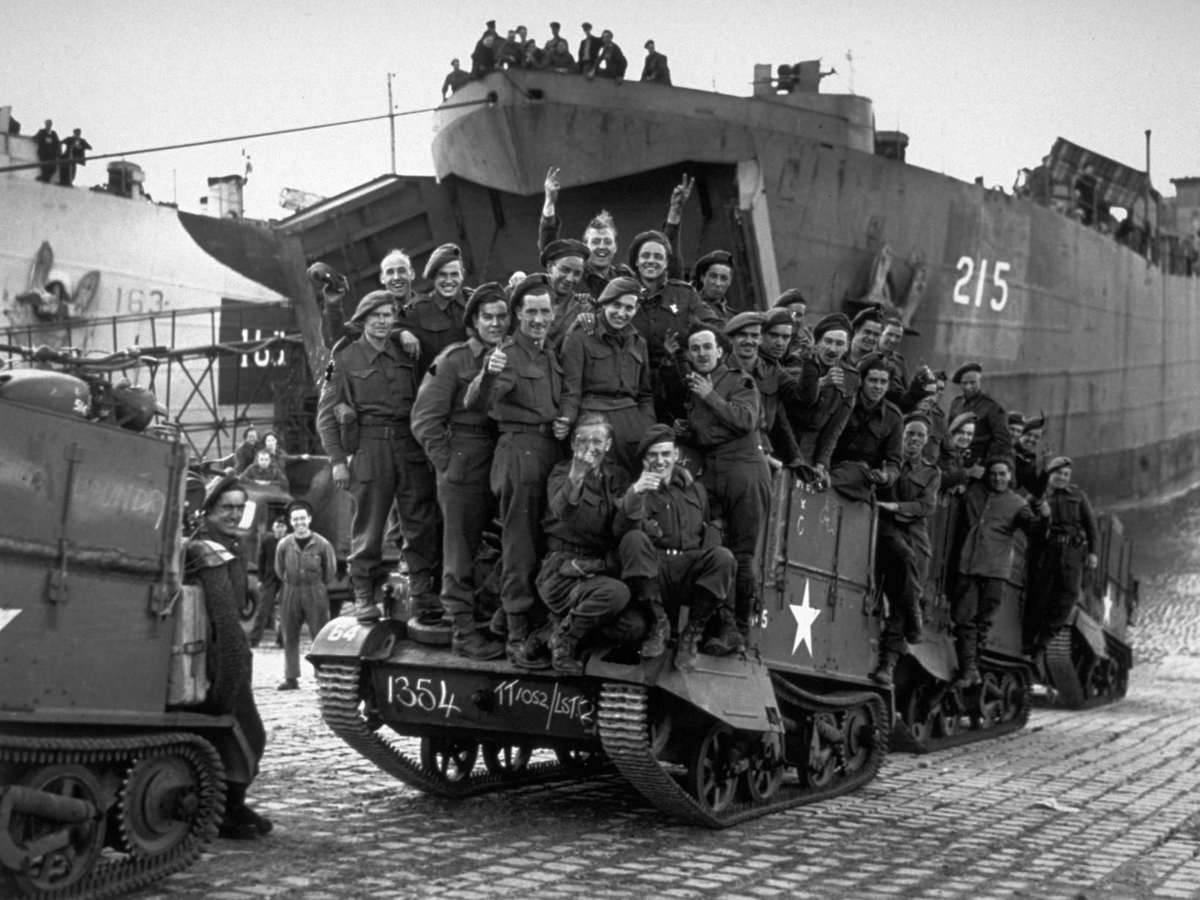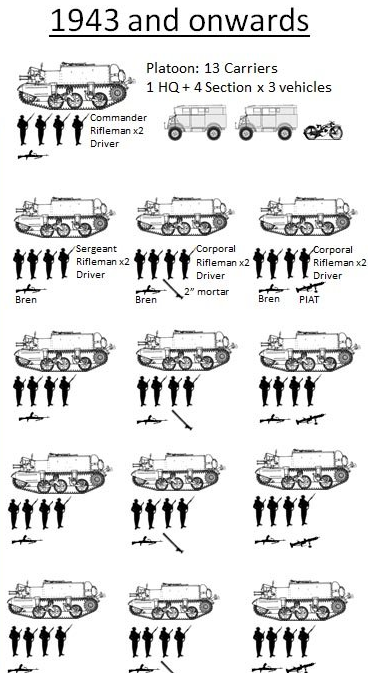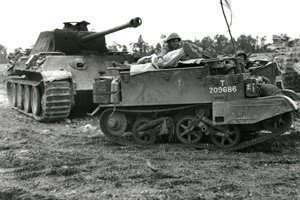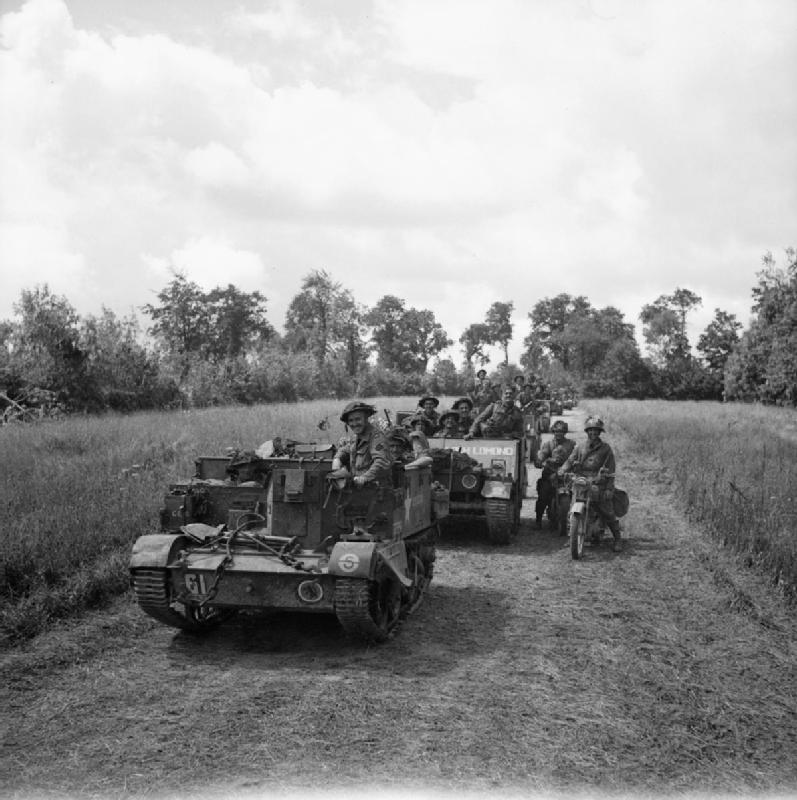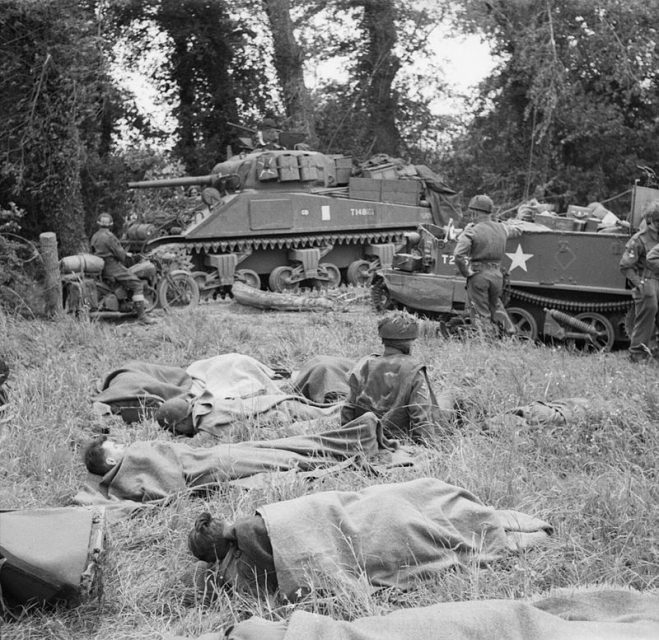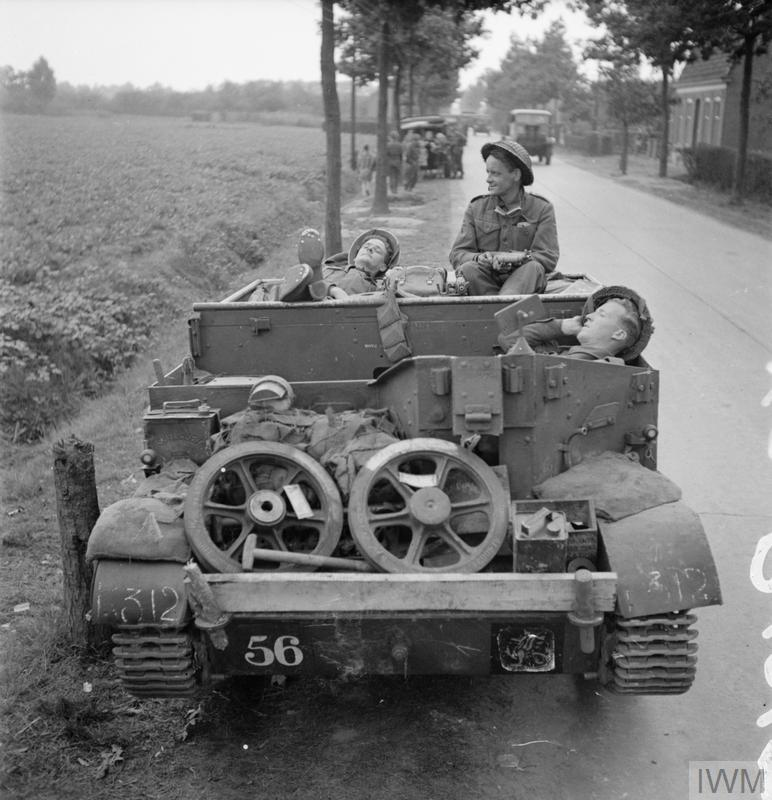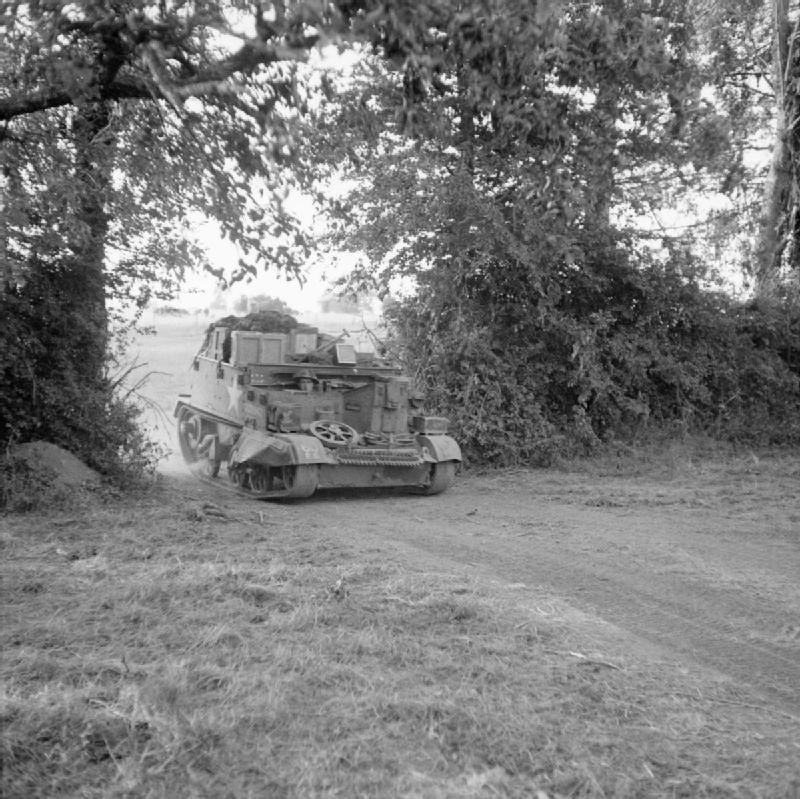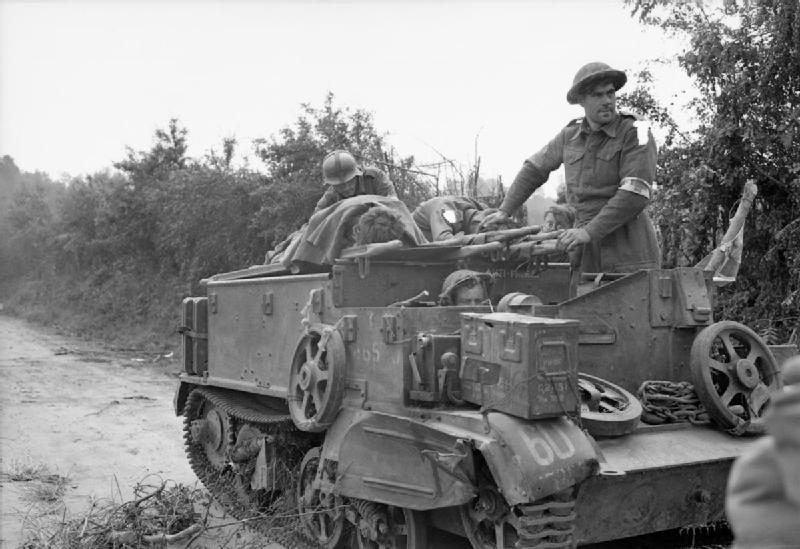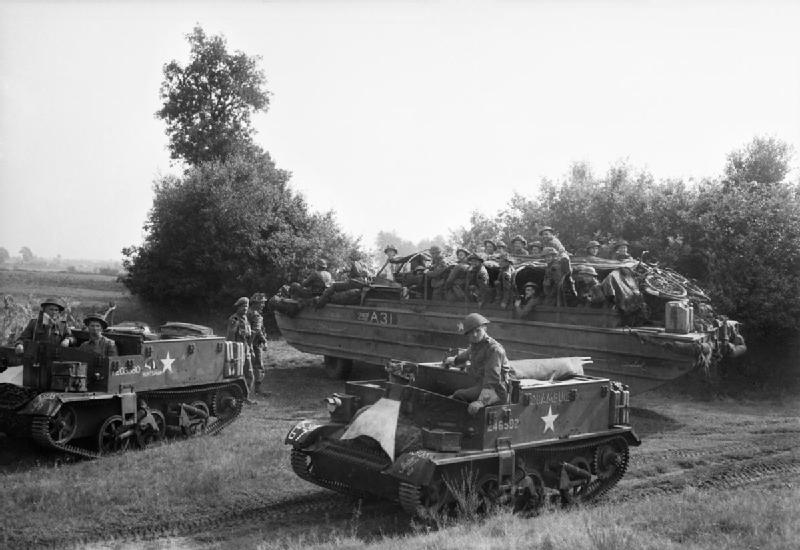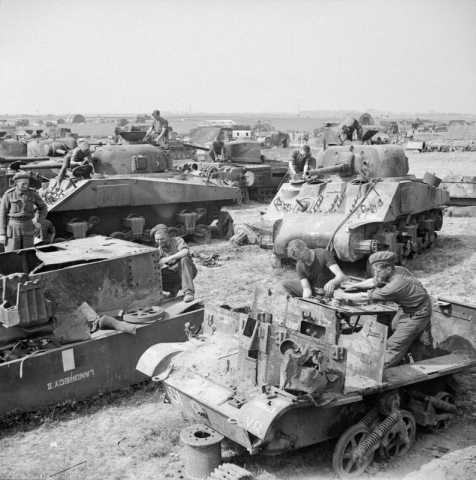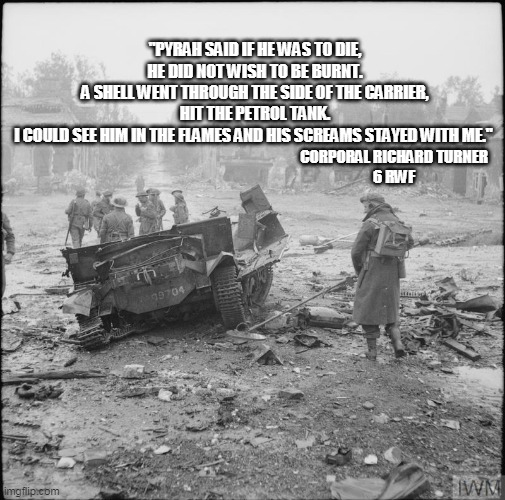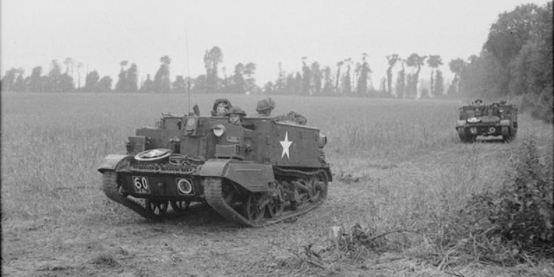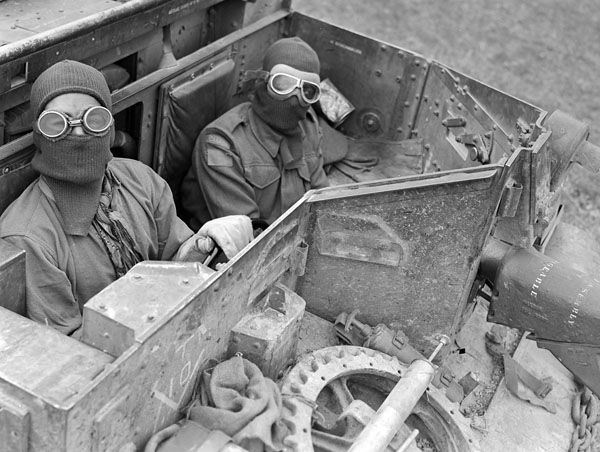The Universal Carrier (Part One)
How did this piece of open topped herp-a-derp become the coolest piece of kit in infantry battalions scrapping through the liberation of North West Europe?*
I know you're curious...
Read on. /1
#WW2 #SWW #History
How did this piece of open topped herp-a-derp become the coolest piece of kit in infantry battalions scrapping through the liberation of North West Europe?*
I know you're curious...
Read on. /1
#WW2 #SWW #History
The Universal Carrier came about in 1940 as a desire to streamline production processes & merge the Bren Gun and Scout Carriers' roles into a single AFV.
The former's name stuck and gained popular traction.
Bren Carrier (below) for Infantry Battalions' Carrier Platoons. /2
The former's name stuck and gained popular traction.
Bren Carrier (below) for Infantry Battalions' Carrier Platoons. /2
The Scout Carrier was intended to operate alongside Vickers Mk VI Light Tanks for Divisional Reconnaissance Regiments etc.
Various traits of both vehicles, bar the obvious Horstmann suspension, that carried over into the Universal Carrier are quite evident. /3
Various traits of both vehicles, bar the obvious Horstmann suspension, that carried over into the Universal Carrier are quite evident. /3
In the battle for France both AFVs repeatedly proved themselves.
It's pretty unsurprising as they represented a combination of tried and tested components from interwar carrier projects, powered by the delightful Ford V8.
Simplicity with a bit of edgy track warping steering. /4
It's pretty unsurprising as they represented a combination of tried and tested components from interwar carrier projects, powered by the delightful Ford V8.
Simplicity with a bit of edgy track warping steering. /4
These light, hyper-nimble AFVs weighing in at under 4 tons: were closely related to the Machine Gun Carrier developed for the Vickers.
The decision to establish dedicated machine gun battalions employing these MGs in a support role saw the MGC redesigned for Bren. /5
The decision to establish dedicated machine gun battalions employing these MGs in a support role saw the MGC redesigned for Bren. /5
Bren Gun Carriers were promoted as "very low and inconspicuous... a mechanical greyhound."
A carrier platoon of 10 carriers offered each Infantry Battalion a small, integral armoured force, although there was some problems early on convincing soldiers they were not tanks! /6
A carrier platoon of 10 carriers offered each Infantry Battalion a small, integral armoured force, although there was some problems early on convincing soldiers they were not tanks! /6
Hutchinson was sorta right*, yes, the Bren Gun Carrier was designed to provide mobility to the Bren as the Carrier Platoon was the heaviest armed platoon in the Battalion.
*He was discussing Scout Carriers oddly enough, but note that slang. /7
*He was discussing Scout Carriers oddly enough, but note that slang. /7
Brigaded carriers repeatedly proved their worth in the battle of France, where a brigade pulled their battalions' carrier platoons together to operate them a light, decisive mobile reserve.
The Universal retained the open topped design, allowing for rapid dismount in action. /8
The Universal retained the open topped design, allowing for rapid dismount in action. /8
There were some hiccups along the way, no where near as tumultuous as Churchill's development, such as a large batch of defective 'marzipan' bogie wheels that just collapsed at random in 1941.
No doubt a hangover from the previous year's panic. /9
No doubt a hangover from the previous year's panic. /9
In many ways the intervening period is sorta a non story. Yes issue is patchy and units bemoan older, more worn out examples arriving, but by 1944 infantry battalions are dripping with carriers.
19 Universals
7 3" Mortar Carriers*
12 Loyd Carriers*
* Just Universal today /10
19 Universals
7 3" Mortar Carriers*
12 Loyd Carriers*
* Just Universal today /10
The majority of these are centred in the Carrier Platoon's 13 universals.
1 for Pl HQ
4 sections of 3 Universals w. Bren.
1 carrier in each sec with a PIAT.
1 carrier in each sec w. a 2" mortar.
Carrier = crew of 4, driver, 2 pte, and an NCO, w. 3 No. 4, 1 Sten & 1 Bren. /11
1 for Pl HQ
4 sections of 3 Universals w. Bren.
1 carrier in each sec with a PIAT.
1 carrier in each sec w. a 2" mortar.
Carrier = crew of 4, driver, 2 pte, and an NCO, w. 3 No. 4, 1 Sten & 1 Bren. /11
So you're 12 man carrier section has three Brens, a PIAT and 2" Mortar - and WS No. 38 set for comms to Pl HQ - who have 38 and 18!
This saw a shift to the carrier platoon acting as heavy infantry during exercise, focusing a platoon's raw firepower in each section. /12
This saw a shift to the carrier platoon acting as heavy infantry during exercise, focusing a platoon's raw firepower in each section. /12
Carrier sections also acted as light personnel carriers when needed - depending on how desperate the situation was, & the tow hook on each one allowed them to pull trailers or anti-tank guns up if required.
Each company had another at Coy HQ, ready for odd jobs as required. /13
Each company had another at Coy HQ, ready for odd jobs as required. /13
In Normandy, carrier platoons saw action doing EVERYTHING.
When mounted they could provide additional supporting fire, or provide aggressive, mobile carrier recces behind German lines in more porous circumstances. /14
When mounted they could provide additional supporting fire, or provide aggressive, mobile carrier recces behind German lines in more porous circumstances. /14
Their quick turn of speed and nimble handling, up to 30mph but much lower CC, plus being fully tracked meant they could outperform Jeeps in equivalent roles and filled an interesting gap.
When dismounted, carrier platoons discarded the carriers to fight as v heavy inf. /15
When dismounted, carrier platoons discarded the carriers to fight as v heavy inf. /15
When supporting attacks the main role was that of ammunition supply, so carrier secs would repeatedly run the gauntlet to race up supplies to infantry coys at the sharp end.
Burdened with large amounts of supplies that no other vehicle could easily, nor discreetly, take up. /16
Burdened with large amounts of supplies that no other vehicle could easily, nor discreetly, take up. /16
Battlefield innovation saw them repeatedly marked with red crosses and used to assist the stretcher bearers in picking up casualties and speed evac back to RAP.
This reduced the stress/pressure on SBs, keeping them fresh.
Jeeps also saw action in this role. /17
This reduced the stress/pressure on SBs, keeping them fresh.
Jeeps also saw action in this role. /17
Thanks to the Universal Carrier's well balanced mix of tracked manoeuvrability, ability to generate sustained firepower, light armour and speed, they provided battalion commanders with a tremendous asset.
At night, they'd run up grub, ammo and water to supply points. /18
At night, they'd run up grub, ammo and water to supply points. /18
They were however vulnerable to mortar bombs, shells, mines and grenades - which could limit employment.
The other problem was whilst, yes, they offered adequate protection against small arms fire, anything much larger guaranteed a pretty catastrophic result to anyone inside./19
The other problem was whilst, yes, they offered adequate protection against small arms fire, anything much larger guaranteed a pretty catastrophic result to anyone inside./19
Fusilier James Pyrah, 6 Royal Welch Fusiliers' unofficial comedian, was killed during a resupply run for Operation Greenline. /20
When a questionnaire circulated around battalion commanders in 1945, the real desire was for a second carrier platoon as these vehicles & their crews proved utterly invaluable in the ultimate oddjob role - ranging from heavy infantry to delivery driver. /21
So the humble Universal Carrier in inf bn did, well, everything.
From rapid cas evac, infantry clinging on whilst racing about as a light personnel carrier, supply runs, recce work, it did it all.
Part Two will look at some of the other variants... a subtle clue below. /thread
From rapid cas evac, infantry clinging on whilst racing about as a light personnel carrier, supply runs, recce work, it did it all.
Part Two will look at some of the other variants... a subtle clue below. /thread
*The sharp eyed among you may note some Machine Gun Carriers from an MG Bn crept in.
Apols.
Apols.

 Read on Twitter
Read on Twitter